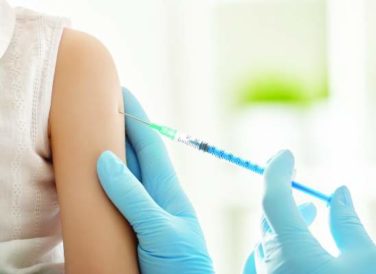Probuphine, a subdermal buprenorphine implant approved May 26 by the Food and Drug administration for opioid addiction, will likely increase adherence to buprenorphine maintenance, therapy by making it more convenient, according to Caleb Banta-Green, Ph.D., a senior researcher at the University of Washington Alcohol and Drug Abuse Institute in Seattle.
Buprenorphine is a partial opioid agonist that blocks the effects of full agonists and dulls withdrawal symptoms. “It’s a very effective drug treatment medication. It can cut mortality in half ” compared to abstinence-only programs, and “in general, the longer people are on it, the better. [Probuphine will] make long-term therapy much” easier for patients and physicians, he said.
Probuphine consists of four 1-inch rods implanted subdermally inside the upper arm. The product delivers buprenorphine continuously for up to 6 months, and is approved as an alternative to daily dosing in patients stable on 8 mg or less of oral buprenorphine, a low-to-moderate dose.
“My sense is it will be used in stable patients who want the convenience, but I think we’ll also see it used in people who have trouble adhering to everyday dosing, or who miss doses and relapse. Once it’s out there, I think you’ll start seeing people use it in different ways,” said Dr. Peter Friedmann, an addiction treatment specialist in Springfield, Mass., and chief research officer for Baystate Health.
In a 6-month trial, the implant worked as well as daily sublingual dosing; urine screens remained clean in 63% of Probuphine patients versus 64% of sublingual patients, although a few patients in the Probuphine arm required sublingual supplementation. The FDA rejected an indication for buprenorphine induction.
Labeling allows for two back-to-back courses for a total treatment duration of 1 year, but the FDA has required the distributer, Braeburn Pharmaceuticals, to study longer treatment courses.
Prescribing requires a buprenorphine waiver , as well as live training on implant insertion and removal, which is part of the product’s Risk Evaluation and Mitigation Strategy program. Probuphine also comes with a medication guide for patients.
Labeling notes that the implant “should be used as part of a complete treatment program to include counseling and psychosocial support.” The FDA recommends an office visit 1 week after implantation then follow-up visits no longer than 1 month apart.
There should be less of a diversion risk with Probuphine, which might make buprenorphine prescribing more attractive for physicians, but uptake will depend in part on Probuphine’s price and insurers’ willingness to cover it. Braeburn plans a product launch this summer, but hasn’t released pricing information.
“We assume it’s going to be expensive,” Dr. Banta-Green said.
Labeling warns of the risk of nerve damage with the implant and removal procedure, as well as implant migration, protrusion, and expulsion. The most common side effects in trials were implant-site pain, itching, and redness, as well as systemic side effects in line with other buprenorphine formulations, including headache, insomnia, upper respiratory tract infection, nausea, anxiety, back pain, depression, constipation, and vomiting.
There is abuse potential. Each rod contains 80 mg of buprenorphine, so patients will leave the office with 320 mg in their arm. “If they really want to take (the rods) out and extract the medication, people will do that. Our street chemists are very ingenious,” Dr. Friedmann said.
Dr. Banta-Green has no disclosures. Dr. Friedmann is an adviser for Indivior, maker of Suboxone, and disclosed research funding from Alkermes.





